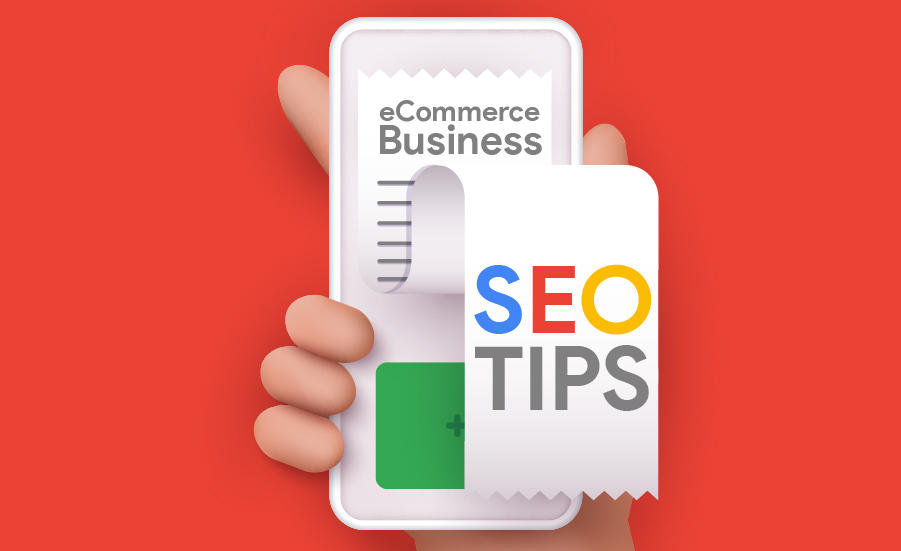

Ultimately, the higher you appear in search results (SERPS) the more traffic you will receive, converting into more revenue for your business to make.
Organic traffic (website traffic acquired via search engines) is one of the most valuable traffic sources for any eCommerce business. This is because when users turn to search engines they have a specific need they are looking to fulfil, therefore they are demonstrating more purchase intent than an online user scrolling through social media.
And, Organic Traffic is free! If you can get your SEO fundamentals in place and stay on top of optimising your site in line with the latest SEO practice, you will achieve a constant and reliable stream of qualified traffic all year round.
On-page optimisations and site architecture play a big role in eCommerce SEO performance. However, you need to be very mindful of some technical signals, such as how well and efficiently Google crawls and indexes your pages and any off-page signals that communicate site authority.
Outlined below are our top 5 areas to focus on when approaching SEO for your site:
Product pages need to be at the heart of your SEO efforts. For these pages to rank well, you need your on-page optimisations to be spot on.
Product Name – in most cases this name will also be in your title tag and URL. It is important you incorporate the common search terms that users will be inputting into search engines to find this nature of the product. Sticking with just brand-specific names for your product will be detrimental to visibility in search results.
Product Images – ensure you have keyword-rich filenames and image alt tags, this will give your product a greater chance of appearing in image results.
Internal Links – if this is a key product page for your business, make sure there are lots of links pointing to it site-wide, this communicates the importance of this page to Google.
Customer Reviews – from a user perspective this is a great way to boost customer confidence in the product. From a search engine bot perspective, showing reviews on a product page and making it up with Review Schema Markup indicates the credibility of the page and shows you are trying to facilitate the best user experience for shoppers.
Detailed Product Description – Google loves to know a page is information-rich and helpful for users. Including high quality, keyword-rich product descriptions will help support good rankings.
Site architecture plays an important role in how well a Google bot can crawl, categorise and interpret your website. You want to ensure that there is a distinct hierarchy, with the rule of thumb being that there should never be more than 3 clicks to reach any page.
Home Page > Category Pages > Product Pages
Search engine bots do not crawl your site in the same way a user would, instead they discover pages via the internal linking structure. Therefore, this needs to be easy to follow and not too deep.
An internal linking structure communicates to search engine bots how pages are related to each other and facilitate these pages being crawled and indexed. Therefore a thorough horizontal linking structure that facilitates navigation to other categories and similar products is going to be highly beneficial.
Also don’t forget to link to information-rich blogs, FAQ’s and articles to help communicate the broader value of your site to bots and improve the user experience.
Tip: linking to pages you particularly want to rank well from the homepage helps to highlight the importance of that page to crawlers, this will contribute to more frequent crawling and favourable rankings.
Core Web Vitals, most notably Page Load Speed, are a key ranking signal – therefore the faster your pages load the higher they will rank.
Google Page Speed Insights is a great tool to understand the immediate opportunity to improve your load times.
Some common quick wins include:
Work alongside a web developer to identify where the opportunity may be for your website.
Building domain authority accounts for 1 of the 3 major SEO pillars that influence overall performance. This authority is largely built through acquiring high-quality backlinks.
As an eCommerce site, having a concrete backlink strategy in place will be invaluable, to not only build the overall authority of your site (thus receive more favourable rankings) but can build the URL rating of your all-important product pages.
There are many different tactics you can employ as part of your strategy, an example would be to offer free products in exchange for linked reviews. Reach out to affiliate sites and influencers who write reviews on similar products to what you sell and offer a free product exchange for a review and backlink.
Other tactics include:
-Looking for sponsorship opportunities
-Create content partnerships with relevant sites
-Partake in Charity Events
-Get some PR coverage from news/media platforms
-Guest posting on relevant sites
Backlink building is a long term strategy, but the results will certainly pay off. If you can exceed the domain authority rating of your competitors and adhere to broader SEO best practices you have every chance of ranking top and winning that sought after traffic.